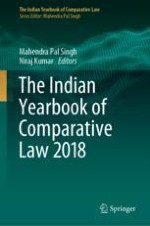2019 | OriginalPaper | Buchkapitel
15. Giving Precedence to the Indian Penal Code
verfasst von : Stanley Yeo
Erschienen in: The Indian Yearbook of Comparative Law 2018
Verlag: Springer Singapore
Aktivieren Sie unsere intelligente Suche, um passende Fachinhalte oder Patente zu finden.
Wählen Sie Textabschnitte aus um mit Künstlicher Intelligenz passenden Patente zu finden. powered by
Markieren Sie Textabschnitte, um KI-gestützt weitere passende Inhalte zu finden. powered by
